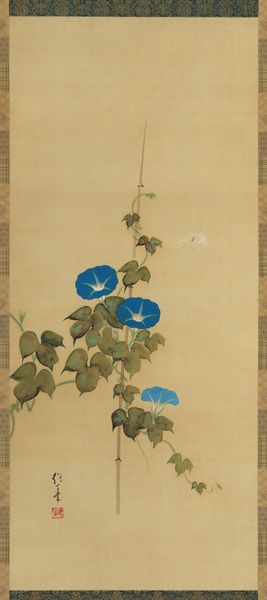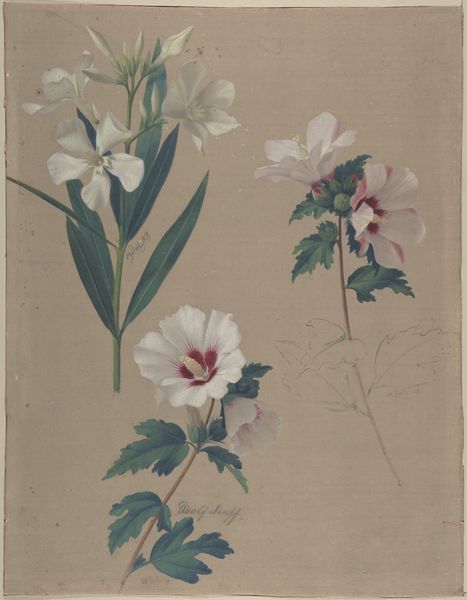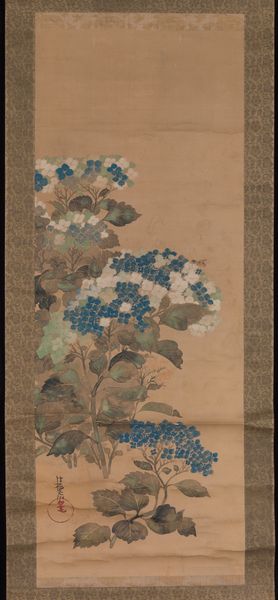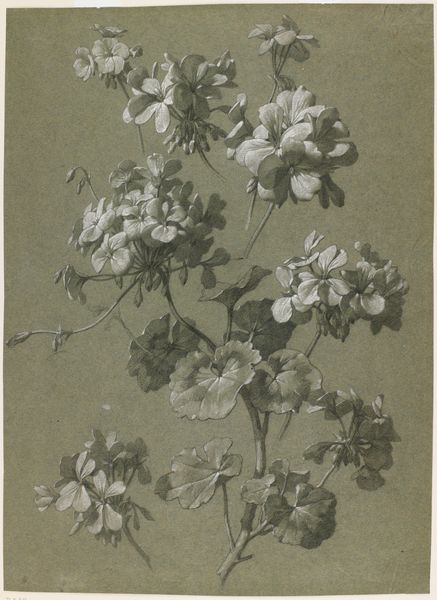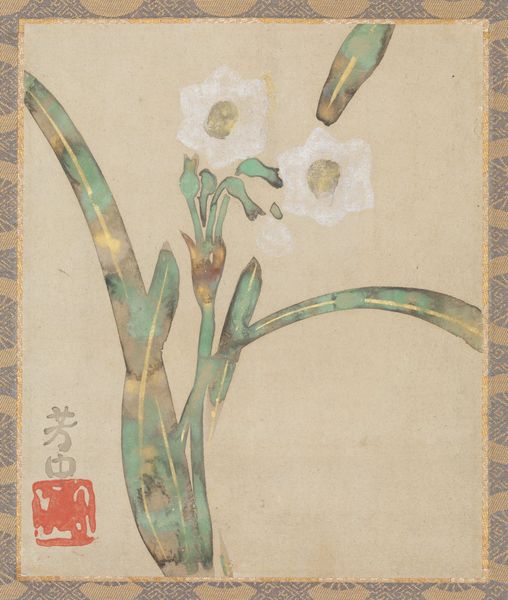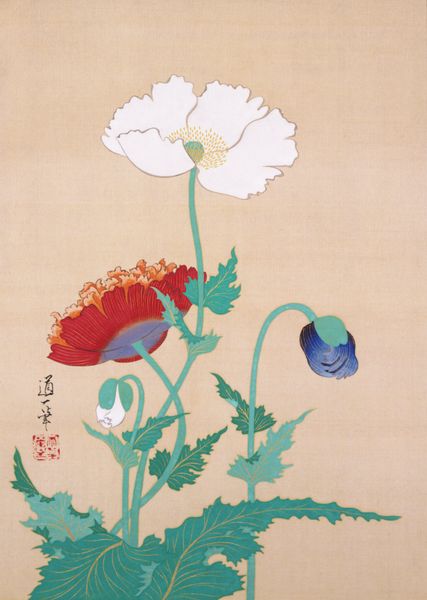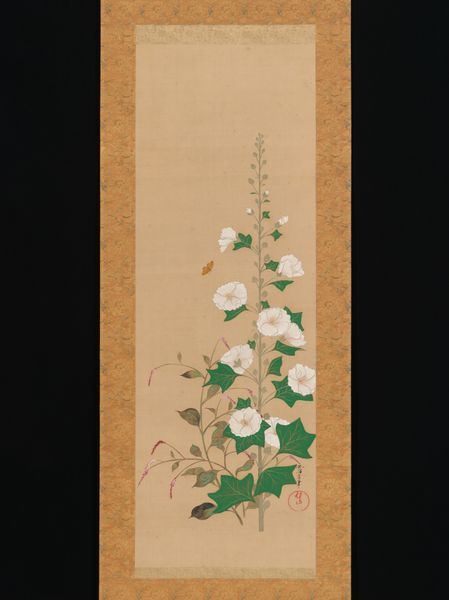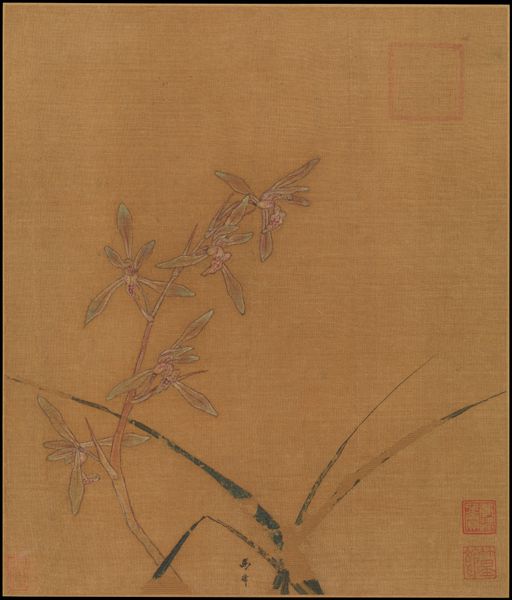
hanging-scroll, ink
#
abstract painting
#
water colours
#
japan
#
possibly oil pastel
#
handmade artwork painting
#
hanging-scroll
#
ink
#
fluid art
#
acrylic on canvas
#
painting painterly
#
watercolour bleed
#
watercolour illustration
#
watercolor
Dimensions: 35 11/16 × 13 1/4 in. (90.65 × 33.66 cm) (image)68 1/2 × 18 5/8 in. (173.99 × 47.31 cm) (mount, without roller)
Copyright: Public Domain
Sakai Ōho created this painting of hollyhocks with ink and color on silk during the 19th century, a time when Japan's art world was experiencing both traditionalism and burgeoning interaction with Western art. Ōho, born into a samurai family, navigated a society that valued artistic skill as a marker of cultural sophistication. The hollyhock, often associated with the summer season in Japanese art, carries layers of meaning—from simple beauty to more complex symbols of transience. Note the way Sakai has captured the delicate textures and forms of the flowers and leaves. The bold indigo, acting as a counterpoint to the ivory white of the hollyhocks, draws your eye into the painting, making you consider ideas around balance and harmony. Rather than depicting a grand landscape, Sakai focuses on the intimate details of nature, inviting a sense of personal contemplation and peace. I wonder how Sakai used this painting to engage with the world around him, and what this artwork reveals about the personal experience and artistic expression of 19th-century Japan.
Comments
No comments
Be the first to comment and join the conversation on the ultimate creative platform.

